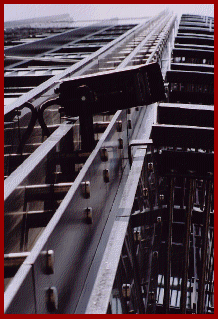| ||||||||||||||||||||||||||||||
Welcome to the | ||||||||||||||||||||||||||||||
 | ||||||||||||||||||||||||||||||
 | ||||||||||||||||||||||||||||||
All you need to know about lenses, | ||||||||||||||||||||||||||||||
The idea was that (and this is the technical bit) instead of images being brought into sharp focus 17.524mm behind the 'C' lens, (the secondary focal point to be irritatingly accurate), the new 'CS' design would actually focus images at 12.5mm. Some camera manufacturers designed their lens mounts so that with the twist of a ring, either lens series could be used; but the more common practice was to simply use a 5mm spacer ring screwed onto the back of a C mount lens, which would then allow it to function properly on a CS mount camera. Almost all modern industrial CCTV cameras are now fitted with the universally adopted CS mount. Firstly, there's Camera Location - using the 'Cone of Containment' technique to decide on the most appropriate position for the camera, it then becomes relatively easy to decide on the degree of lens coverage required; experienced professionals can usually tell by sight, but for the less certain, a proper lens selection chart or lens Remember that if you need to calculate a target distance from the camera, always allow for the fact that as the height of the camera increases, the distance to target will also increase (basic geometry!). One quick tip from Doktor Jon; if you think about the effect of ultra wide angle, wide angle and standard lenses, on any particular format CCTV camera. If the camera is pointing at a right angle to a brick wall sited approximately 20 metres away, you could reasonably expect the following widths to be covered:- | ||||||||||||||||||||||||||||||
 | ||||||||||||||||||||||||||||||
IMPORTANT: No material may be reproduced, copied or redistributed from this site, © doktorjon.co.uk 2004 - 2008 Homepage...:...Gateway...:...Technical Gateway....:....Quickfind Index....:....Equipment Directory | ||||||||||||||||||||||||||||||

